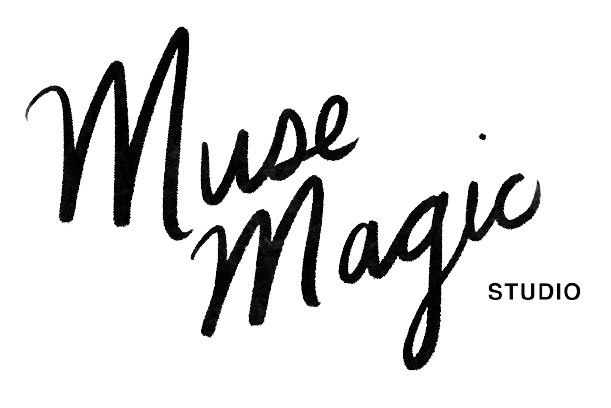Master the essentials, land clients, and launch your dream business. No coding required.
Ready to turn your creative skills into consistent income?
Whether you’re starting from scratch, pivoting from a design background, or looking for a flexible side hustle, freelance web design is one of the most in-demand and scalable services out there.
In this guide, I’ll walk you through how to launch a professional web design business with zero coding experience. Using tools like Elementor and HoneyBook to build beautiful websites and smooth client experiences.
You’ll learn how to:
✷ Set up your business
✷ Create strategic websites with Elementor
✷ Price your services confidently
✷ Attract and manage clients
✷ Build systems that grow with you
Why I Recommend Elementor
If you’re not a developer (and don’t want to be), Elementor is your best friend. It’s a drag-and-drop WordPress builder that gives you full creative control – without touching code.
Why I love Elementor:
- No coding required
- Tons of pre-made templates
- Works with e-commerce, forms, and email tools
- Fully customizable
- Huge community and support library
✷ Pro tip: Upgrade to Elementor Pro for premium features like forms, animations, and advanced styling. It’s worth it.
What Is Freelance Web Design?
Freelancers work independently, often remotely, to provide services to clients on a project basis. As a web designer, you’ll help entrepreneurs and small businesses build a strong online presence.
You can:
- Work from anywhere
- Choose your own hours and rates
- Serve a wide range of niches (coaches, beauty pros, bloggers, etc.)
Most requested site types:
- Personal brands
- Service-based businesses
- E-commerce shops
- Portfolios and blogs
Step-by-Step: How to Start Your Freelance Web Design Business
Step 1: Define Your Brand
Your brand sets the tone for your entire business. Start here:
- Target Audience: Who do you want to work with? (e.g. coaches, creators, photographers)
- Problem You Solve: Websites that build trust, get bookings, and make sales.
- Mission Statement: Help entrepreneurs grow with smart, strategic web design.
- Brand Identity: Choose fonts, colors, a logo, and a tone that reflects your style.
Step 2: Get Your Domain & Hosting
Clients will ask you for help with this. Know the basics:
- Domain: Your web address (e.g. yourname.com)
- Hosting: The space where your website lives
My go-to options:
Elementor Hosting (All-in-one, beginner-friendly)
$9.99–$99.99/mo – includes domain, SSL, and Elementor Pro
Hostinger (Budget option)
Starts at $2.99/mo – includes free domain, email, and SSL
✷ Client Tip: Always have your client buy hosting under their name. Then request user access or use LastPass for login sharing.
Step 3: Learn Web Design Basics (UX + Templates)
Before designing, sketch a simple wireframe:
- Hero image or headline
- About section
- Services or offers
- Testimonials
- Contact form
Use Elementor templates to speed things up. Customize fonts, colors, and sections to match your client’s brand.
Step 4: Build a Strategic Website
At a minimum, include:
- Home
- About
- Services
- Portfolio or Work
- Contact
Design Tips:
- Use big, clear fonts
- Keep it mobile-friendly
- Add bold CTAs (e.g., “Book a free consult”)
- Break up text with visuals and white space
Step 5: Write Clear, Client-Focused Copy
You don’t need to be a copywriter, but clarity is key. Each section should answer:
- Who are you?
- Who do you help?
- What transformation do you offer?
- What should the visitor do next?
Optional: Use AI or content prompts to help if writing isn’t your thing.
Step 6: Price Your Services Smartly
Start simple, but don’t undercharge:
- One-page site: $300–$600
- 5-page site: $1,000–$3,000
✷ Always use a contract
✷ Collect a deposit before starting
✷ Include 1–2 rounds of revisions in your package
Step 7: Find Your First Clients
You don’t need a huge audience. Start with people you know.
Get scrappy:
- Offer beta sites in exchange for testimonials
- Post your work on Pinterest or Instagram
- Join Facebook groups with your ideal clients
- Try freelancing platforms like Upwork
Step 8: Manage Projects Like a Pro
Don’t wing it. Use systems.
Tools I love:
- Notion – for checklists, timelines, and client content
- HoneyBook – to manage contracts, invoices, and workflows
- Google Drive – to collect content and assets
Create a repeatable flow:
- Discovery call
- Proposal + contract
- Deposit
- Content collection
- Design
- Revisions
- Launch
- Offboarding + testimonial
Step 9: Communicate Like a CEO
Use email templates for:
- Welcome message
- Onboarding checklist
- Weekly updates
- Feedback requests
- Offboarding + testimonial ask
This builds trust and keeps you organized.
Step 10: Get Paid Professionally
Payment tools:
- HoneyBook
- Stripe
- PayPal Business
✷ Set clear terms in your contract
✷ Use milestone-based invoices or 50/50 payment
Step 11: Build a Mini Portfolio
Even one finished project adds credibility. Include:
- Screenshots or mockups
- A short description of the project
- Client testimonial (or a friend/fake client if needed)
✷ Use Canva to create case study graphics for Pinterest!
Step 12: Market Simply + Consistently
You don’t need to be on every platform. Choose 1–2 and go all in.
Ideas:
- Post mini case studies on Instagram or LinkedIn
- Start a blog with SEO tips for small business owners
- Use Pinterest to drive traffic to your services
- Offer referral rewards for clients who send people your way
- Join communities like Women in Web Design, Freelance Founders, or The Copy Club
Legal & Money Basics
Note: Not legal advice—just a starting point.
- Choose a structure: Sole Prop or LLC
- Get an EIN (free from IRS.gov)
- Open a business bank account
- Track your income and expenses (Wave, QuickBooks, Notion)
- Always use contracts
- Set aside 25–30% of your income for taxes
My Go-To Tools
- Elementor Pro – design freedom without code
- Elementor Hosting – fast, beginner-friendly
- HoneyBook – client workflows & payments
- Notion – project management
- Canva Pro – for branding assets
- Google Workspace – branded email + file storage
Final Words
You don’t need to know everything. You don’t need a fancy degree. You just need to start.
Every single site you build is a portfolio piece, a confidence booster, and a step toward the freedom you want.
Start small. Stay consistent. Trust the process.
You’ve got this, and your future clients are waiting.
Affiliate Disclosure: This post contains affiliate links. I only recommend tools I use and trust to help you grow your freelance business.

